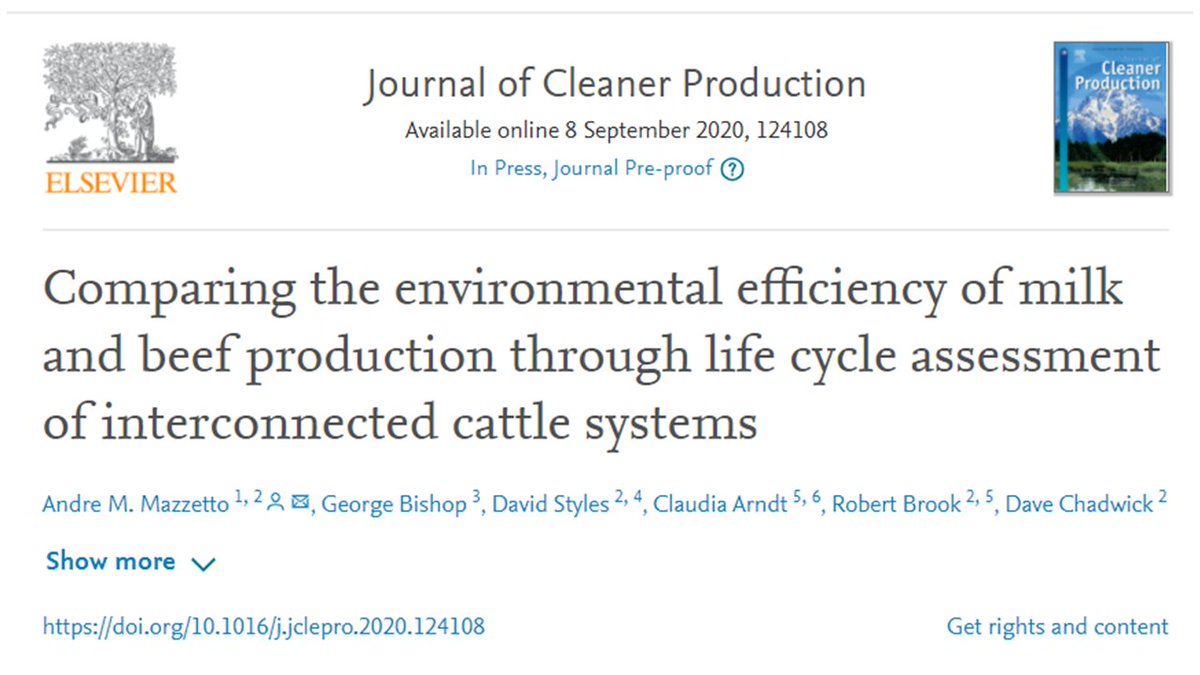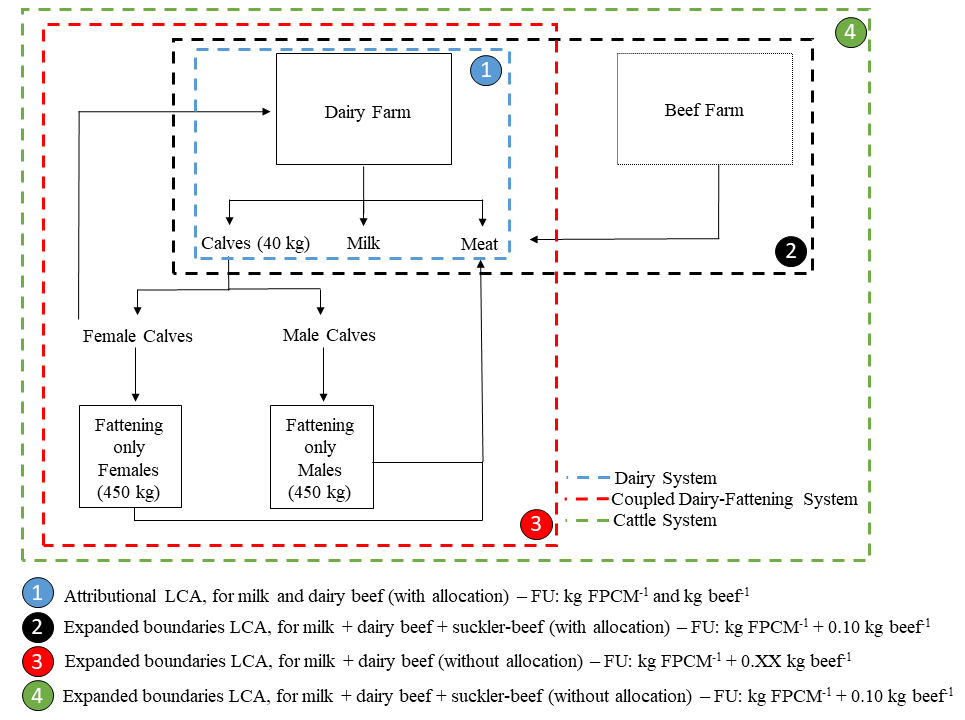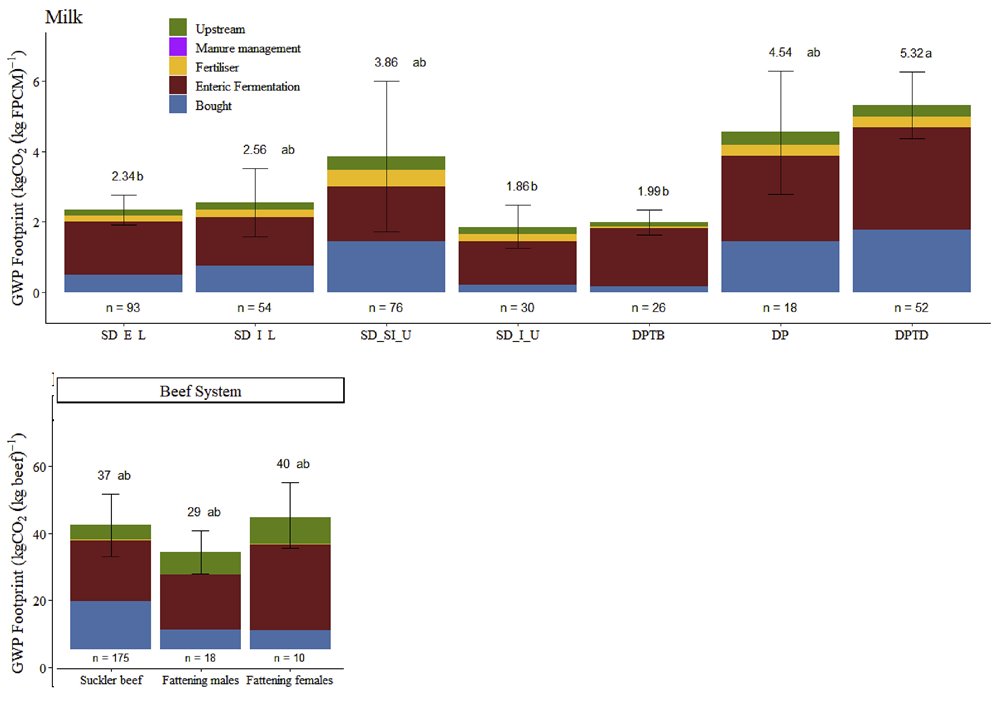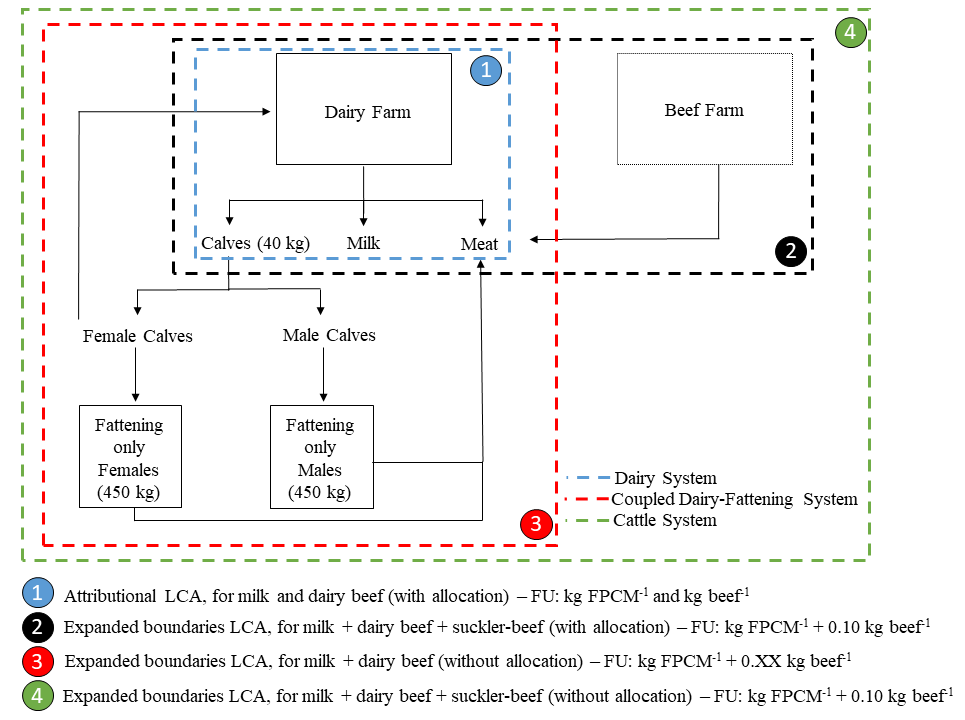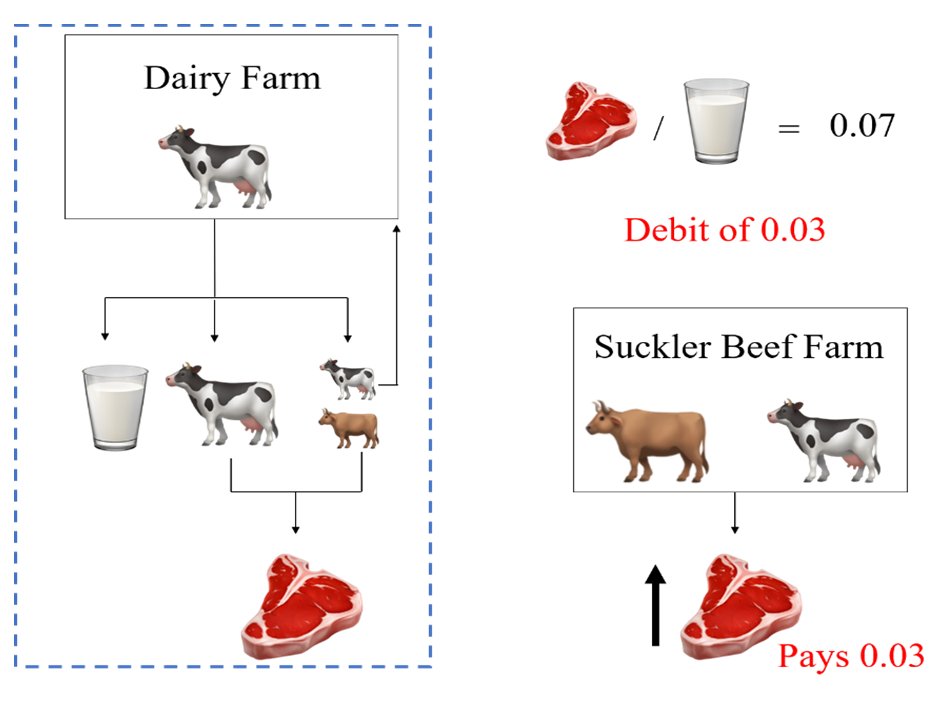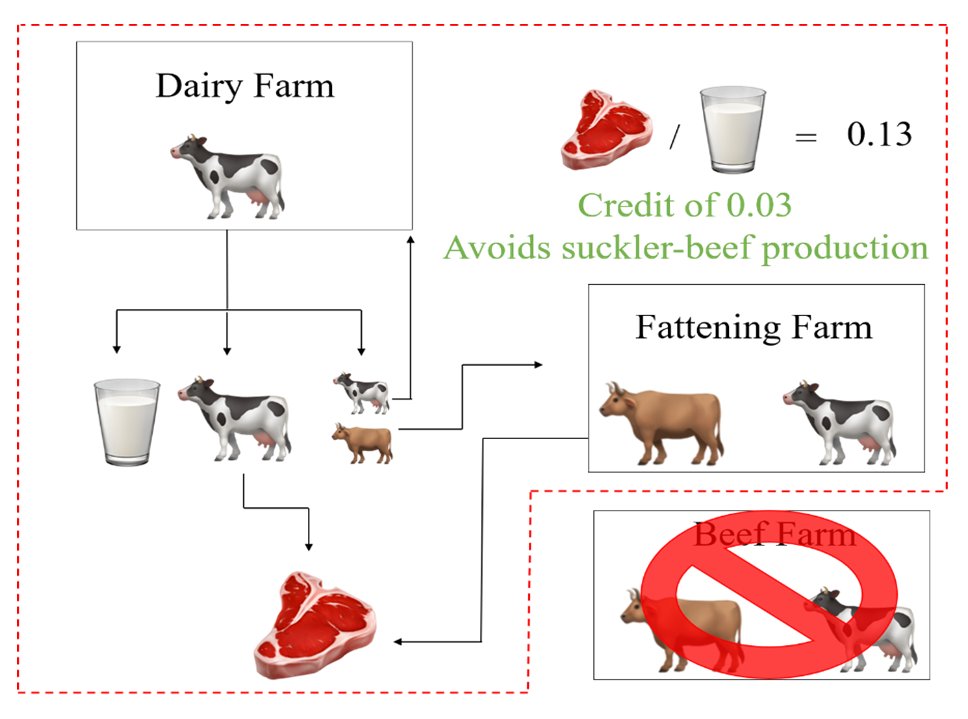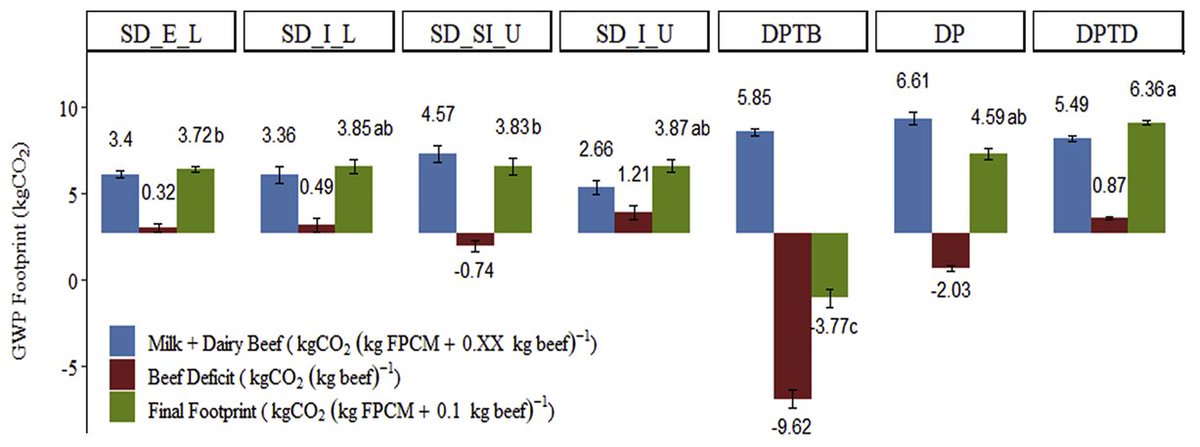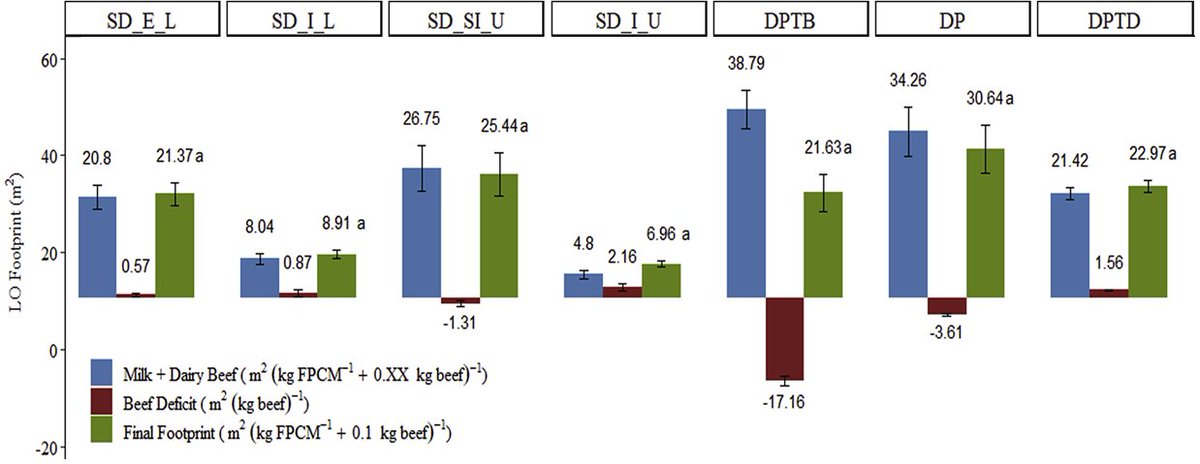Happy to share our new paper: "Comparing the environmental efficiency of milk and beef production through life cycle assessment of interconnected cattle systems"
https://www.sciencedirect.com/science/article/abs/pii/S0959652620341536
It is a bit complicated, but hold my hand, and I will explain in a thread:
https://www.sciencedirect.com/science/article/abs/pii/S0959652620341536
It is a bit complicated, but hold my hand, and I will explain in a thread:
Milk and beef production are inherently interconnected, so why not evaluate both at the same time? We used a database of 203 beef and 349 Costa Rican  dairy farms and performed Life Cycle Assessment (LCA) for five impact categories. This was part of the @suscorida project.
dairy farms and performed Life Cycle Assessment (LCA) for five impact categories. This was part of the @suscorida project.
 dairy farms and performed Life Cycle Assessment (LCA) for five impact categories. This was part of the @suscorida project.
dairy farms and performed Life Cycle Assessment (LCA) for five impact categories. This was part of the @suscorida project.
Firstly: we performed attributional LCA for  milk and
milk and  beef separately (as it is typically done!). This means that the allocation between milk and beef was done considering milk, cows sold, and calves sold at 40 kg (the blue boundary).
beef separately (as it is typically done!). This means that the allocation between milk and beef was done considering milk, cows sold, and calves sold at 40 kg (the blue boundary).
 milk and
milk and  beef separately (as it is typically done!). This means that the allocation between milk and beef was done considering milk, cows sold, and calves sold at 40 kg (the blue boundary).
beef separately (as it is typically done!). This means that the allocation between milk and beef was done considering milk, cows sold, and calves sold at 40 kg (the blue boundary).
The conclusion was the same old one: specialised farms (SD) showed a lower footprint for milk production than Dual Purpose (DP) farms. Nothing new here. Beef production data will be used soon, wait for it!
Now we considered the "full system": calves going to a beef farm, being fattened and producing beef. We expanded the boundaries (the red boundary) and accounted for the environmental impact generated by these animals in the beef farm (and here is where we used the beef footprint)
If you are expanding the boundaries of an LCA, forget about allocation. We also had to create a new functional unit, a combination of beef and milk.
But how?
But how?

According to FAO, in 2018 were produced globally:
675,621,019 tonnes of milk
66,250,349 tonnes of beef
The result is a beef:milk ratio of 0.10, i.e. to ever 1 kg of milk produced, 0.10 kg of beef is produced.
Our unit is now:
1 kg of milk + 0.10 kg of beef
675,621,019 tonnes of milk

66,250,349 tonnes of beef

The result is a beef:milk ratio of 0.10, i.e. to ever 1 kg of milk produced, 0.10 kg of beef is produced.
Our unit is now:
1 kg of milk + 0.10 kg of beef
We calculated the beef:milk ratio for all the dairy farms benchmarking the 0.10 ratio and here is how it works:
If the farm produced less than the 0.10 ratio (let's say 0.07), the remaining beef needs to be produced by another farm. The catch is: we need to account for the emissions in the other farm! The "debit" of 0.03 needs to be paid, in the form of emissions from a "pure beef" farm.
If the farm produced more than the 0.10 ratio (let's say 0.13), it avoided the production of beef by a "pure beef" farm, generating a "credit". In this case, the credit is 0.03, and we "discounted" the emissions avoided from the beef farm from the final footprint.
Check this out: The DP farms produced a lot of beef, and this is reflected in high milk:beef ratio, reducing the final footprint (look at that massive "credit" - the red bar - for DPTB), resulting in some "negative" final footprint (the green bar).
SD farms produced less beef, and the red bar is now positive (they have to pay for the extra production of beef!), increasing the final footprint.
So it looks like it is better to have a DP farm, producing a lot of beef per kg of milk.
Should we change all farms to dual purpose? Hold your horses (or should I say cows
(or should I say cows  ?). Look at the results for land use:
?). Look at the results for land use:
Should we change all farms to dual purpose? Hold your horses
 (or should I say cows
(or should I say cows  ?). Look at the results for land use:
?). Look at the results for land use:
Even with SD farms paying the debit, and DP farm getting the credit, SD uses less land than DP farms! SD farms are more efficient using land, and most DP farms (at least in Costa Rica!) use a lot of land.
The results show the importance of considering dairy and beef systems as one when evaluating sustainable intensification strategies.
LCA people, don’t be afraid of expanding your boundaries (maybe not a good line in COVID times, but…)
LCA people, don’t be afraid of expanding your boundaries (maybe not a good line in COVID times, but…)
We should also look at more than one "impact category" (using an LCA jargon). Different conclusions for different impacts analysed.
There is no single strategy likely to simultaneously address all environmental challenges facing the dairy sector.
sector.
There is no single strategy likely to simultaneously address all environmental challenges facing the dairy
 sector.
sector.
I know, it was long but worth it right? I want to thank my co-authors David Styles, @GeorgeBishop10, @RobMBrook, @ArndtClaudia, @Dave_Chadwick_ for their help (and the patience!!) with my crazy (and sometimes hard to understand) analysis.
You will find a lot more (detailed) information in the paper about the data we used, approaches and results. Get in touch if you want (even more) info!
@agresearchnews - check this!
@agresearchnews - check this!

 Read on Twitter
Read on Twitter